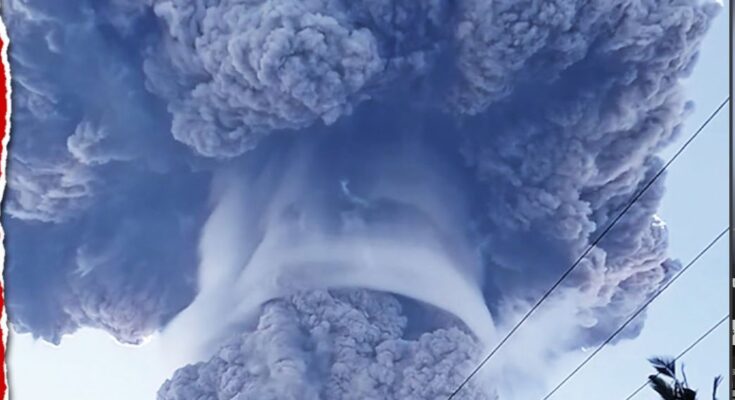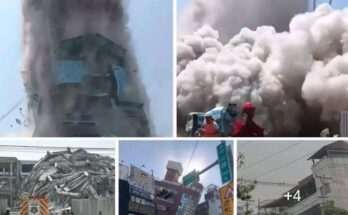Indonesia’s Rumbling Mount Lewotobi Laki-Laki Erupts, Sending Plumes of Smoke into the Sky
Indonesia’s volatile Mount Lewotobi Laki-Laki erupted dramatically this week, sending thick plumes of smoke and ash thousands of meters into the sky. Located on Flores Island in East Nusa Tenggara province, the volcano began rumbling days prior to the eruption, prompting increased monitoring from the country’s Center for Volcanology and Geological Hazard Mitigation (PVMBG).
The eruption occurred early Monday morning, catching the attention of nearby residents and volcanologists alike. Dark gray clouds billowed high above the crater, with ashfall reported in surrounding villages. According to PVMBG, the ash column reached heights of up to 1,500 meters above the summit, driven westward by prevailing winds. Authorities have issued warnings for aviation and are advising local communities to remain alert.
Mount Lewotobi Laki-Laki, which translates to “Male Lewotobi,” is one of a pair of twin volcanoes—the other being Mount Lewotobi Perempuan, or “Female Lewotobi.” Together, they form a striking geological formation that has long fascinated scientists and locals alike. Though less well-known than Indonesia’s most active volcanoes such as Merapi or Sinabung, Lewotobi Laki-Laki has a history of periodic eruptions. The last significant eruption occurred in 2014, although smaller tremors and ash emissions have been recorded more recently.
Indonesia, situated along the Pacific Ring of Fire, is home to over 130 active volcanoes, more than any other country in the world. The archipelago’s dense tectonic activity makes it both a natural wonder and a zone of constant geological vigilance. The eruption of Lewotobi Laki-Laki serves as a stark reminder of the power and unpredictability of nature in this region.
Emergency response teams have been deployed to nearby communities to provide support and monitor health risks due to volcanic ash. Ash inhalation can lead to respiratory issues, especially in children and the elderly. Local authorities have distributed masks and advised residents to stay indoors or evacuate if necessary. Fortunately, as of the latest reports, no casualties have been reported, and residents in high-risk zones have been relocated to safer areas.
Tourism in the area has been temporarily halted as a precaution. Hikers and climbers, often drawn to the volcano’s scenic trails and panoramic views, have been advised to postpone their plans. Flights in and out of nearby airports are being closely monitored, though no widespread cancellations have been announced.
Experts continue to monitor the volcano using seismographs, satellite imagery, and drone footage to assess ongoing activity. While the current eruption is classified as moderate, authorities warn that further eruptions could follow.
As the nation watches and waits, Indonesia’s preparedness and swift emergency coordination highlight the resilience of communities living in the shadow of active volcanoes. For now, Mount Lewotobi Laki-Laki stands shrouded in smoke—its rumblings a powerful echo of the dynamic forces beneath the earth’s surface.



